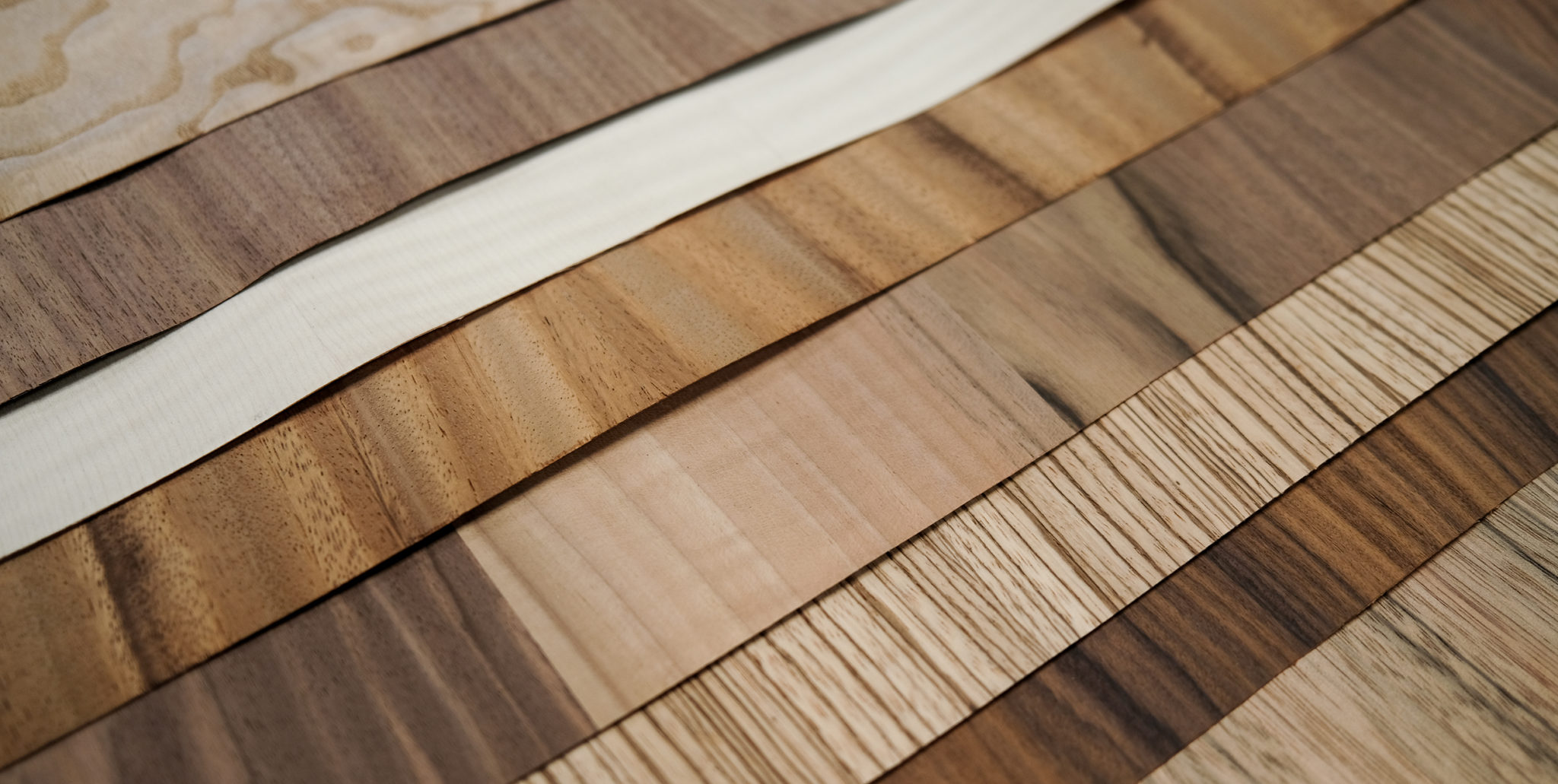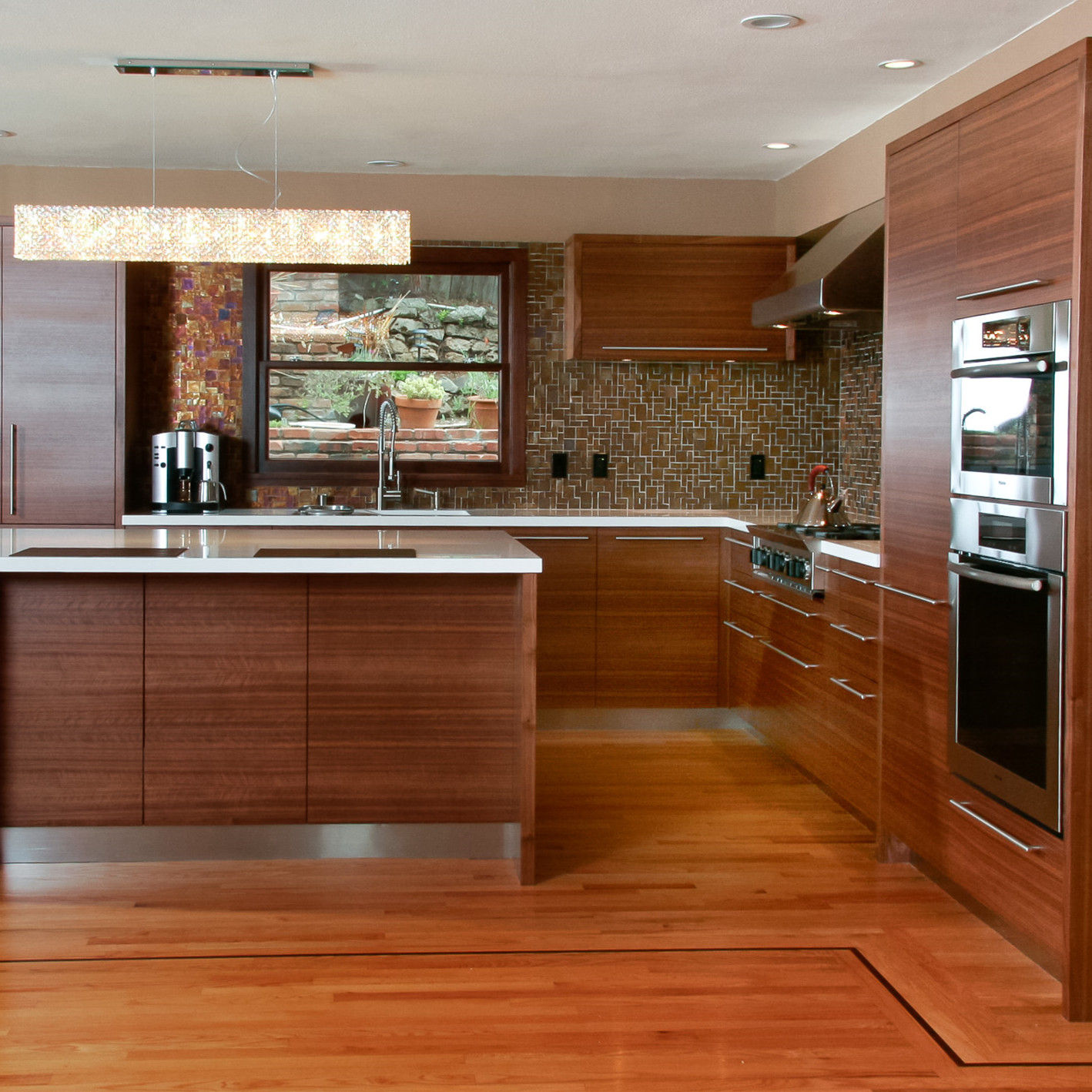Understanding Wood Veneer Faced Architectural Cabinets

Wood veneer faced architectural cabinets offer a sophisticated and elegant solution for homeowners seeking the beauty of real wood without the hefty price tag of solid wood cabinets. This approach combines the visual appeal of natural wood with the durability and affordability of engineered materials.
Advantages of Wood Veneer
Wood veneer is a thin layer of wood, typically 1/48 to 1/16 inch thick, sliced from a log. This thin layer of wood is then glued to a core material, such as plywood, MDF, or particleboard, to create a finished panel. The use of wood veneer in architectural cabinets offers several advantages:
- Aesthetic Appeal: Wood veneer replicates the natural beauty and grain patterns of solid wood, providing a luxurious and timeless look.
- Cost-Effectiveness: Wood veneer is significantly less expensive than solid wood, making it a more budget-friendly option for high-end aesthetics.
- Stability and Durability: The core material provides structural support, minimizing warping, cracking, and other issues that can occur with solid wood.
- Sustainability: Using veneer allows for the utilization of smaller logs and wood scraps, promoting sustainable forest management practices.
Types of Wood Veneers
A wide variety of wood species are available for veneer, each with its unique characteristics:
- Oak: A popular choice known for its durability, strength, and distinctive grain pattern. It comes in various shades, from light to dark, and can be stained to achieve different finishes.
- Cherry: Renowned for its rich reddish-brown color and fine, consistent grain. Cherry veneer adds warmth and elegance to any space.
- Maple: Known for its smooth, close-grained surface and light color. Maple veneer can be stained to create a variety of finishes, including the popular “butcher block” look.
- Walnut: Highly prized for its dark, rich brown color and distinctive, swirling grain pattern. Walnut veneer adds a touch of sophistication and luxury.
- Mahogany: Known for its reddish-brown color and beautiful grain. Mahogany veneer is often used for traditional and formal styles.
Comparison with Solid Wood Cabinets
| Feature | Wood Veneer | Solid Wood |
|---|---|---|
| Cost | Lower | Higher |
| Stability | More stable due to core material | Prone to warping, cracking, and movement |
| Durability | Durable with proper care | Very durable |
| Appearance | Similar to solid wood | Unique and natural |
| Sustainability | More sustainable | Less sustainable |
Manufacturing Process
The manufacturing process for wood veneer faced cabinets involves several steps:
- Core Material Preparation: Plywood, MDF, or particleboard is cut to size and prepared for veneer application.
- Veneer Application: Thin sheets of wood veneer are carefully glued to the core material using specialized adhesives.
- Pressing and Curing: The veneer-faced panels are pressed and cured under heat and pressure to ensure a strong bond.
- Finishing: The veneer surface is sanded, stained, and finished to achieve the desired look.
- Cabinet Construction: The finished panels are used to construct the cabinet boxes and doors.
Design and Aesthetics

Wood veneer faced architectural cabinets offer a wide range of design possibilities, allowing you to create stunning and unique spaces. The natural beauty of wood veneer, combined with its versatility, makes it an ideal choice for enhancing the aesthetics of any room.
Kitchen Design, Wood veneer faced architectural cabinets
Wood veneer faced cabinets can transform a kitchen into a haven of style and functionality. Here are some design ideas:
- Modern Minimalism: Use light-colored veneers like maple or birch in a sleek, contemporary kitchen. Pair them with stainless steel appliances and minimalist hardware for a clean and airy look.
- Rustic Charm: Embrace the warmth of wood veneer with rich, dark finishes like walnut or cherry. Combine them with open shelving, exposed brick walls, and reclaimed wood accents for a cozy and inviting atmosphere.
- Traditional Elegance: Create a timeless and sophisticated kitchen with classic wood veneer finishes like oak or mahogany. Incorporate intricate details like crown molding, raised panel doors, and antique hardware for a touch of grandeur.
Living Room Design
Wood veneer faced cabinets can add a touch of sophistication and elegance to a living room. Here are some design ideas:
- Entertainment Center: Create a custom entertainment center with wood veneer faced cabinets to house your TV, sound system, and other electronics. Use a combination of open shelving and closed cabinets to display your favorite items and keep others organized.
- Bookcase: Design a stunning bookcase with wood veneer faced cabinets to showcase your collection of books and decorative items. Consider using different veneer finishes and patterns to create visual interest.
- Built-in Storage: Incorporate wood veneer faced cabinets into your living room design for seamless storage solutions. Use them to store linens, blankets, or other items, keeping your space clutter-free and stylish.
Unique Patterns
Wood veneer can be used to create intricate and unique patterns. Here are some examples:
- Marquetry: This technique involves using different wood veneers to create complex designs and images. It is often used for decorative panels, furniture, and other objects.
- Veneer Layering: Combining different wood veneers in layers can create depth and texture. This technique can be used to create geometric patterns, abstract designs, or even realistic images.
- Veneer Inlays: Inlaying wood veneer into other materials like metal or stone can create striking visual effects. This technique is often used for decorative accents and furniture details.
Impact of Color and Texture
The color and texture of wood veneer can significantly impact the overall ambiance of a space.
- Light Veneers: Light-colored veneers like maple, birch, and ash create a sense of openness and brightness. They are well-suited for smaller spaces or rooms with limited natural light.
- Dark Veneers: Dark-colored veneers like walnut, cherry, and mahogany add warmth, depth, and sophistication to a space. They can make a room feel more intimate and cozy.
- Textured Veneers: Textured veneers can add visual interest and tactile appeal. For example, a rough-hewn veneer can create a rustic feel, while a smooth veneer can create a more modern look.
Applications and Considerations: Wood Veneer Faced Architectural Cabinets

Wood veneer faced architectural cabinets offer a compelling blend of aesthetic appeal, durability, and sustainability, making them a versatile choice for various applications. Let’s explore the suitability of these cabinets in different contexts and delve into their practical aspects.
Durability and Maintenance
The durability and maintenance requirements of wood veneer faced cabinets are influenced by the type of veneer used, the quality of the finish, and the environment in which they are installed.
- Hardwood veneers, such as oak, maple, and walnut, are known for their resilience and resistance to scratches and dents. They typically require minimal maintenance, involving regular dusting and occasional cleaning with a damp cloth.
- Softwood veneers, like pine and cedar, are more susceptible to damage but can be protected with a durable finish. Regular maintenance, including dusting, cleaning, and periodic refinishing, is essential to preserve their appearance.
- The type of finish applied to the veneer also plays a significant role in its durability. Polyurethane finishes offer excellent protection against water, stains, and scratches, while oil-based finishes provide a natural look and feel but require more frequent maintenance.
- Exposure to moisture and sunlight can affect the longevity of wood veneer. Cabinets installed in humid environments or areas with direct sunlight may require more frequent cleaning and maintenance to prevent warping, discoloration, and other damage.
Environmental Impact
Wood veneer is a sustainable material that offers several environmental benefits compared to solid wood.
- Veneer production requires less wood, reducing the impact on forests. It allows for the use of smaller, less desirable logs, which might otherwise be wasted.
- Veneer manufacturing processes are generally more efficient, consuming less energy and generating fewer emissions than solid wood production.
- Wood veneer is a renewable resource, and its use promotes sustainable forestry practices. By using veneer, we can preserve larger trees and their ecological value.
Choosing the Right Veneer
The choice of wood veneer depends on factors such as the desired aesthetic, budget, and intended use.
- Aesthetic: Consider the color, grain pattern, and texture of the veneer to achieve the desired look for your project. For a classic and timeless look, oak, maple, and walnut veneers are popular choices. For a more contemporary feel, consider veneers with bold grain patterns, such as cherry or mahogany.
- Budget: Veneer prices vary depending on the species, quality, and availability. Less common or exotic veneers tend to be more expensive. Consider your budget and choose a veneer that fits your financial constraints.
- Intended use: The intended use of the cabinets will influence the choice of veneer. For high-traffic areas, consider durable hardwoods like oak or maple. For less demanding applications, softwoods like pine or cedar can be a cost-effective option.
Wood veneer faced architectural cabinets offer a sophisticated and timeless look, adding a touch of elegance to any space. When it comes to smaller bedrooms, maximizing space is key, and a smart choice for storage is exploring dresser options for small bedroom.
These versatile pieces can double as a dresser and nightstand, offering a functional and stylish solution. Wood veneer faced architectural cabinets can also complement a small bedroom’s décor, providing a cohesive and refined aesthetic.
Wood veneer faced architectural cabinets offer a timeless elegance and a touch of sophistication to any space. But when considering a bedroom above a garage, ensuring proper insulation is crucial for comfort and energy efficiency. A well-insulated floor, as outlined in this comprehensive guide to insulating bedroom floor above garage , will prevent noise and temperature fluctuations, making your bedroom a peaceful haven.
With a comfortable and stylish environment, your wood veneer cabinets will truly shine.
